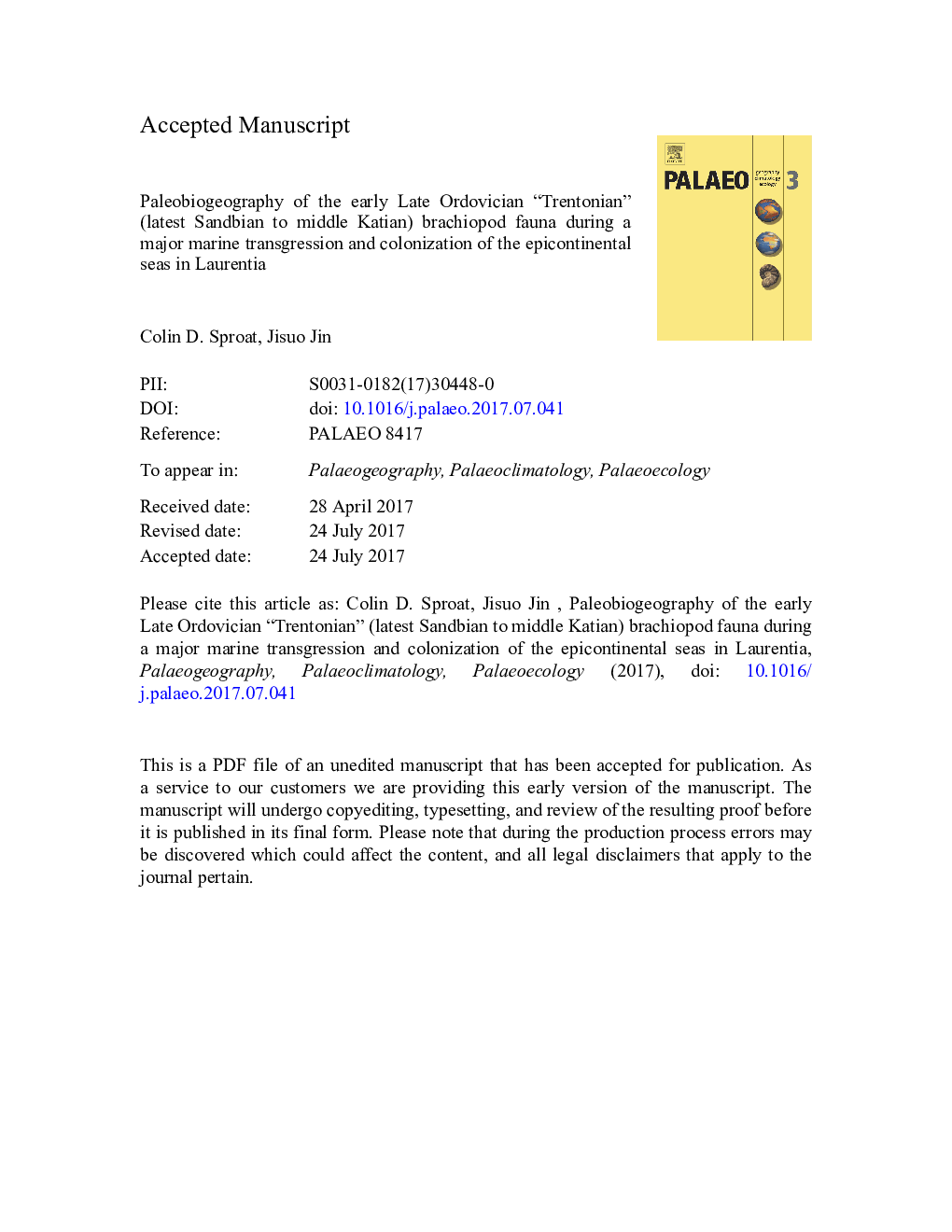| Article ID | Journal | Published Year | Pages | File Type |
|---|---|---|---|---|
| 8868553 | Palaeogeography, Palaeoclimatology, Palaeoecology | 2017 | 43 Pages |
Abstract
During the late Sandbian and early to middle Katian, a major marine transgression flooded the intracratonic basins and platforms of eastern North America, allowing brachiopods to disperse into the newly formed epicontinental seas. Two main brachiopod faunas can be differentiated using multivariate analysis of faunal data from localities across Laurentia during this time: a relatively diverse Scoto-Appalachian Fauna confined to the eastern margin of North America and peri-Laurentian terranes, and a less diverse but more widely distributed Epicontinental Fauna that expanded into the remainder of the flooded continent. The Epicontinental Fauna can be divided into four subfaunas with subtle compositional differences that correspond to different paleoenvironmental settings of eastern North America, influenced by such paleoecological factors as nutrient-rich cool-water upwelling onto the continent through the Sebree Trough, a greater range of habitable environments on the continental margin and in the adjacent deep Taconic foreland basin, and the interactions between pericratonic and intracratonic water masses of different physical and chemical properties. The Epicontinental brachiopod faunas dominated basins and platforms of continental interior until the Hirnantian extinction event.
Related Topics
Physical Sciences and Engineering
Earth and Planetary Sciences
Earth-Surface Processes
Authors
Colin D. Sproat, Jisuo Jin,
